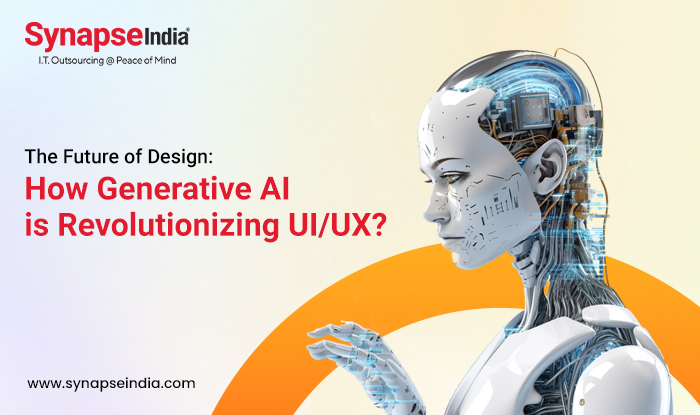 15 Dec 2023
15 Dec 2023
In recent years there has been a shift in technology in terms of user experience (UX). Generative AI has emerged as a game changer in the realm of many technologies. With this ability to analyze user behavior, generate novel content, and enhance the decision-making process, it has made a powerful impression on the user’s mind. Generative AI has brought myriad possibilities for businesses and designers to leverage the power of machine learning and algorithms. In this blog, we will explore the future of designing in terms of Generative AI and how it has revolutionized the future of UX design.
The model of Generative AI learns a vast amount of data and generates new data, images, videos, music, and texts based on the stored information. This new technology and learning models are primed to be a driving force behind the next generation for creating new digital experiences and will create an innovative future of UX design.
Applications used in Generative AI are designed in a way to transform user experience and design. Integration of AI into the design process helps developers and designers to create highly efficient, customized, and visually appealing interfaces. These interfaces proved to be more responsive to user behavior and preferences. For instance, the design tools in Generative AI Examples can select and recommend the most relevant layout, design elements, and graphics as per the user's browsing history, content preferences, and user’s taste. The future of UX design helps to streamline the design process and allows the creation of extremely digital experiences that resonate with the user and enhance engagement as per their personalized experiences.

Tools of Generative AI prove to be the most significant pace in user experiences (UX) and design to create some creative assets. Here are some popular generative AI tools and techniques used in UI and UX Design :
It is integrated into various Adobe cloud applications using Adobe AI and a Machine Learning platform, that offers features like smart cropping, auto-tagging, and intelligent suggestions.
Runway M is a creative toolkit that allows designers to experiment with a wide range of generative tool models. Generative AI Examples work for image generation, style transfer, and more.
As an AI platform, it allows designers to create design recommendations for user interfaces. Designify also supports the creation of layouts, font choices, and color schemes.
Artbreeder is a platform that allows users to modify existing images by generating visual images. UI and UX Design is also used to create artwork but proves to be an exceptional source of inspiration for design elements.
Deep Art is used to apply artistic style to images and help to generate unique patterns and textures.

In the coming years, we tend to see a great shift in AI that will shape the future of UI/UX. Designers and Generative AI developers must work together to create responsible, user-centric, and delightful interfaces. Here are a few existing possibilities to continue in the future of UI/UX:
AI is proficient in processing vast amounts of data that lead to personalized experiences. Users can get interfaces that are tailored to their preferences, choices, and behavior.
AI and its indispensable user experience lead to the prediction of user experiences and trends. Generative AI Examples will proactively adapt interfaces to stay ahead demands of the user to deliver more delightful and intuitive experiences.
AI-generated tools excel in creating content as per the user’s choice. This Generative AI content can include texts, videos, audio, and other templates. This will challenge the designer for the transition from routine tasks to decision-making and focusing on crafting the connected user experience.
The industry works on ethical and personalized design practices. It includes ensuring privacy, addressing bias, and safeguarding the security of data with regulations to shape responsible AI design.
Algorithms of AI enable real-time adaptation of UI and UX Design elements based on user interactions. Interfaces can be dynamic, to ensure a seamless user experience across various scenarios and devices.
Generative AI, undoubtedly transforming the UI and UX Design landscape. As far as we have seen AI is revolutionizing the world, and has been an apt tool that helps in amplifying the creativity of humans. It also enhances the interaction and design of the digital interaction with digital products. The future of Generative AI will be filled with new opportunities and possibilities. Harnessing the UI/UX future with Generative AI will create new possibilities to enhance user experience and create user-centric experiences. Collaborating with UI/UX designers with AI developers can create new possibilities that can help any organization to leap into the future.

